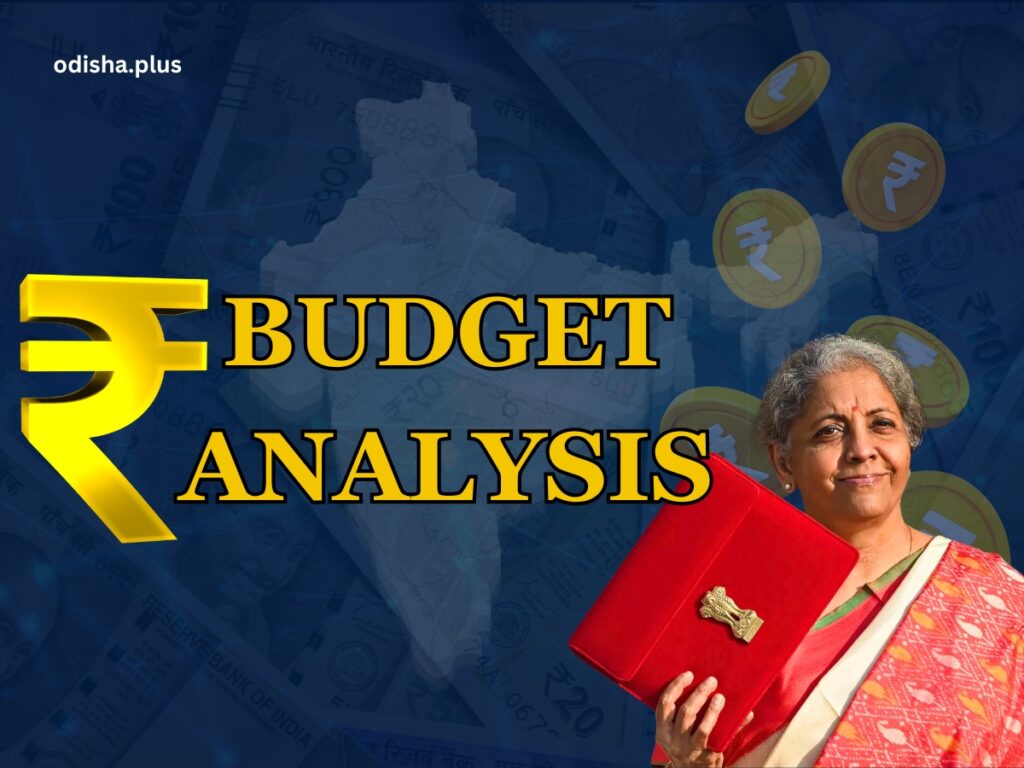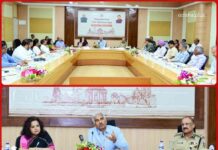The Union Budget has received praise for providing significant tax relief of Rs. 12 lakh per annum to the middle class and several welfare measures
Gopabandhu Mohapatra

Union Budget for the financial year 2025-26 was presented in the Parliament by Finance Minister Mrs. Nirmala Sitharaman. The budget continues the government’s efforts to accelerate growth, secure inclusive development, invigorate private sector investments, uplift household sentiments, and enhance the spending power of India’s rising middle class.
A detailed analysis of Union Budget 2025 reveals critical shortcomings that demand attention, particularly in areas such as salaried employees, job creation, inflation control, wage growth, and measures to counter global trade challenges. Despite this, the Union Budget has received praise for providing significant tax relief of Rs. 12 lakh per annum to the middle class and several welfare measures.
Rural Emphasis
While tax exemptions benefit the middle class, lower-income groups receive limited direct relief. A comprehensive multi-sectoral ‘Rural Prosperity and Resilience’ program will be launched in partnership with states. This will address under-employment in agriculture through skilling, investment, and technology, and invigorating the rural economy. The goal is to generate ample opportunities in rural areas so that migration is an option, but not a necessity. The program will focus on rural women, young farmers, rural youth, marginal and small farmers, and landless families.
Employment schemes like MNREGA saw no significant increase, despite rising rural distress. Additionally, there were no major announcements for food security programs or direct cash transfers to the poor. The budget fails to make substantial investments in health and education, sectors that urgently need stronger public spending. Healthcare spending remains below 3% of GDP, which is insufficient to bridge gaps in public healthcare infrastructure. While digital learning reforms are emphasized, there is no significant push to improve rural schools or recruit more teachers.
Increased infrastructure spending has resulted in a higher fiscal deficit, raising concerns about long-term fiscal sustainability. Market borrowing remains the primary source of financing, potentially driving up interest rates and affecting private investments. The absence of clear strategies for revenue generation beyond disinvestment raises concerns about the government’s ability to manage debt repayment.
While the infrastructure and manufacturing sectors may generate jobs, the budget lacks a concrete employment policy, especially for the informal sector. Private sector hiring remains weak, and there are no new incentives for companies to increase their workforce. Measures to enhance climate resilience in agriculture remain underfunded, despite the increasing unpredictability of weather patterns. Despite subsidies and credit support, the budget fails to introduce comprehensive reforms to address farmers’ income issues. There is no substantial increase in MSP (Minimum Support Price) or procurement guarantees. Previous disinvestment targets have been missed, and the current budget lacks a clear roadmap for asset monetization. Public sector enterprises (PSUs) continue to be a financial burden, yet no significant privatization push has been made.
The increased tax burden on high-income earners and certain luxury goods may discourage investment in key industries. Additionally, there is no clear strategy to simplify GST, which continues to confuse businesses, particularly small enterprises. Despite prioritizing infrastructure, there is no substantial funding boost for renewable energy. The budget lacks incentives for electric vehicles (EVs) or large-scale solar and wind power adoption, and climate change adaptation policies remain underfunded.
Positive Side
Despite its shortcomings, the Union Budget for 2025-26 offers several positive measures aimed at stimulating growth: Income Tax Reforms: Increased Tax Exemption Limit: The exemption limit has been raised from Rs. 7 lakh to Rs. 12 lakh, providing substantial relief to the middle class. This is expected to boost disposable income, increase savings, and drive consumer spending. The standard deduction has been continued at Rs. 75,000, effectively removing the income tax burden for those earning up to Rs. 12.75 lakh annually, encouraging spending and savings.
The Budget focused on making India a global manufacturing hub, reducing import dependency, and generating jobs. The budget raises the FDI limit in the insurance sector to 100%, attracting global insurers and enhancing capital inflows.
Significant allocations for regional air connectivity, highway expansion, and railway modernization reflect the government’s focus on infrastructure growth. The budget introduces dedicated funds and tax exemptions to encourage entrepreneurship and support start-ups and small businesses.
Post-Budget Challenges
The Union Budget sets a financial trajectory, but several challenges must be addressed for effective implementation. Despite the recovery, job growth remains sluggish, particularly in the informal sector. The budget must target manufacturing, MSMEs, and start-ups to boost employment.
Rising rural distress and stagnant productivity require focused policy interventions to ensure tangible benefits for farmers and rural communities. The farmers are on the warpath for Minimum Support Price which is being put under the carpet by the center. Rising global oil prices and supply chain disruptions pose inflation risks, affecting consumer demand. Managing food security while controlling prices is essential.
Balancing fiscal deficit control with sustained growth remains a challenge. High borrowing costs and rising interest payments could strain public finances. Achieving ambitious tax collection targets, especially from GST, could be difficult amidst global uncertainties. The success of privatization plans is crucial. Effective utilization of health and education funds is critical to improving public services and welfare programs like MNREGA while avoiding cuts to essential expenditures.
Policy measures to encourage private sector investments, address regulatory bottlenecks, and offer stable policies are essential to attract both domestic and foreign capital. Financial stress in many states and their demands for higher devolution of funds present a policy challenge that requires balancing fiscal transfers with responsible management.
Geopolitical tensions and supply chain disruptions threaten export-driven sectors. Strengthening domestic demand and securing trade partnerships are vital. Efficient governance is crucial for the timely execution of projects, schemes, and initiatives. Addressing corruption, leakages, and bureaucratic delays will ensure the budget’s intended impact.
Key Announcements
The government will undertake a ‘Prime Minister Dhan-Dhaanya Krishi Yojana’ in partnership with states. This scheme will cover 100 districts with low productivity, moderate crop intensification, and below-average credit parameters. It will help 1.7 crore farmers.
Kisan Credit Cards (KCC) facilitate short-term loans for 7.7 crore farmers, fishermen, and dairy farmers. The KCC loan limit will be enhanced from Rs. 3 lakh to Rs. 5 lakh for loans under the Modified Interest Subvention Scheme. A comprehensive multi-sectoral ‘Rural Prosperity and Resilience’ program will be launched in partnership with states.
To provide relief to parents, particularly those suffering from cancer, rare diseases, and other severe chronic diseases, Govt has proposed to add 36 lifesaving drugs and medicines to the list of medicines fully exempted from Basic Customs Duty (BCD).
Govt has proposed to add 35 additional capital goods for EV battery manufacturing, and 28 additional capital goods for mobile phone battery manufacturing. This will boost domestic manufacture of lithium-ion batteries, for mobile phones & EVs. To the list of exempted capital goods, I propose to add 35 additional capital goods for EV battery manufacturing.
Several senior and very senior citizens have very old National Savings Scheme accounts. As interest is no longer payable on such accounts, therefore govt has proposed to exempt withdrawals made from NSS by individuals on or after the 29th of August, 2024.
A scheme for the socio-economic upliftment of urban workers will be implemented to help them improve their incomes and have sustainable livelihoods and a better quality of life. The government will incentivize electricity distribution reforms and augmentation of intra-state transmission capacity by states. This will improve the financial health and capacity of electricity companies.
The Union Budget 2025-26 reflects a commitment to growth, welfare, and fiscal stability. By focusing on tax relief, agriculture, manufacturing, infrastructure, and entrepreneurship, the budget lays the groundwork for sustained economic development. However, the government must address the lingering issues, particularly in job creation, rural development, and social sector spending, to ensure a balanced and inclusive growth trajectory.
(Author is a Former Banker. Views expressed are personal)

















